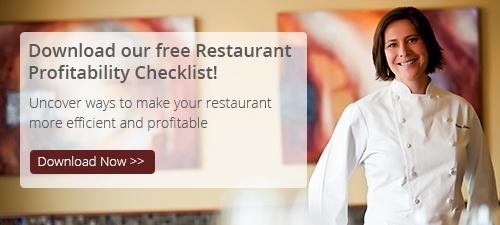What’s the Correlation Between Cash Flow and Profit for Restaurants?
February 26th, 2023 | 7 min. read

Looking at your restaurant profit and loss statements will show how sales are driving your bottom line. However, restaurant cash flow is not the same as profit, and they don't always indicate the same things.
Understanding the nuances between cash flow and profit can be a bit challenging at first. Fluctuations in debt and changes in the amount of equipment owned are the primary drivers, especially for new establishments with high up-front expenses.
At CSI Accounting & Payroll, we've worked with restaurant owners for more than 50 years. We know what metrics are important to keep your eyes on. Many small restaurant owners have asked us:
- What is the difference between cash flow and profit?
- Does equipment depreciation affect cash flow or profit?
- How do I manage my restaurant's debt?
The Difference Between Cash Flow and Profit
Cash flow is simple to remember; it's the money that flows in and out of a business. It's important because it tells how liquid your restaurant is and whether or not you can cover your operating costs and short-term debt. On the other hand, profit is the money that is earned - or what revenues remain after expenses are covered. They may sound similar, and that's because they can be - but not always.
Cash management alone is not enough to save a business with continual profit loss. While cash reserves may help you navigate short-term periods of slow business, if profits fail to cover expenses on a regular basis, debts will continue to grow.
In the food service game, managing cash flow largely revolves around managing debt and equipment purchases. Let's take a look at an example.
Cash Flow vs. Profit: Equipment Depreciation
Equipment is an important factor in the restaurant industry. Restaurants are hard on equipment, and appliances do eventually fail.
Large restaurant equipment purchases, such as a new stand-up mixer or walk-in freezer, decrease cash flow but do not increase expenses by the full amount of the cost, as you can depreciate a percentage of the purchases over time. Moving forward, equipment purchases will continue to depreciate, helping profit without affecting cash flow.
On the other hand, selling the equipment will only provide profit if it has been fully depreciated. Otherwise, you will see positive cash flow without an increase in profit.
Read more about how equipment purchases can help reduce taxes for small businesses.
Managing Restaurant Debt
Speaking of large purchases, taking on debt is a reality for many restaurant owners. While borrowing money increases available cash reserves, the action does not directly affect profit. At the same time, paying off debt decreases cash but doesn’t change profits.
Good Debt
Taking on debt is not necessarily necessarily a bad thing - not all debt is created equal. There is such a thing as "good" debt that is sometimes necessary to take on and indicative of your business moving in a positive direction. Typically, "good" debt is used for growing or investing in your business.
For example, you make a purchase of new equipment or are looking to expand your business. These are common times to take on debt in the restaurant industry. If you have limited cash flow for large equipment purchases when the time arises, leasing may be a better option. Rather than a large upfront cash payment followed by depreciation, the monthly payments on a lease become a fixed expense over time.
Bad Debt
Debt used to mask deficiencies, rather than used to expand profitability as growth capital, is a poor decision. Taking a proactive approach to saving for unexpected expenses is a way to avoid taking on bad debt, which may lead to a slippery slope if profits aren’t leading the charge in covering operational costs.
You never want to be in a place where you have to take out debt to cover:
- Operating expenses, such as building rent and employee wages
- Temporary needs, such as seasonal restaurants' needs*
*If you have seasonal needs, a line of credit is the best debt you can take on because it limits your interest costs. Be sure that it is the minimum amount needed and that it's only being used to get you through your slow time.
Improve Your Profitability and Processes With Monthly Accounting
There is no steadfast correlation between profit and cash flow. They may be linked in certain instances, but don’t assume that making a profit increases cash in the same amount. A restaurant’s cash flow may fluctuate due to influences other than profit.
In the restaurant industry, cash flow largely revolves around managing debt and equipment purchases. Once you've identified that sales are enough to cover operating expenses and temporary needs, then it may be possible to take on additional debt - "good" debt - to grow the business, or to reduce debt with additional cash flow.
If you're not feeling confident in your cash flow methods or maximizing your profits, consider working with a monthly accountant. Monthly accountants go beyond what annual accountants can provide because they're in your books year-round to assist with tax strategy, compliance, and improved profitability for your restaurant.
Want to find out if CSI Accounting & Payroll can be a good fit for you? Click the button below to schedule a free consultation!
Not ready to talk? That's okay! In the meantime, feel free to download our Restaurant Profitability Checklist to determine your restaurant's financial health.
Brian is the owner of CSI Accounting & Payroll. After earning a double major in Accounting and Financial Management from the University of North Dakota, he joined CSI in 1996 and purchased it in 2002. With decades of experience, Brian now focuses on education: contributing to professional associations and business books, actively participating in continued learning for his team, and, of course, sharing transparent insights on CSI’s website.
